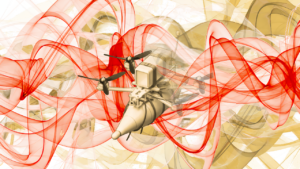For readers unfamiliar with the term “System Administration Force,” it refers to a government force primarily consisting of civilians whose main objective to is help secure the peace after the military has won the war. The concept was first introduced by my colleague Thomas Barnett in his New York Times‘ best-selling book entitled The Pentagon’s New Map. The System Administration (or SysAdmin) force, as conceived by Tom, would be an interagency force that also reaches out to other governments, international organizations, and non-governmental organizations and employs soft rather than hard power in the pursuit of foreign policy objectives.
Although the concept was first greeted with some skepticism, a growing number of analysts are now supporting their own versions of Tom’s SysAdmin force. The latest are Patrick Cronin, senior adviser and senior director at the Center for a New American Security in Washington, DC, and Kristin Lord, vice president and director of studies at the Center for a New American Security [“Deploying Soft Power,” Defense News, 12 April 2010]. Both Cronin and Lord have previous government experience and they draw on that experience to strengthen their arguments. Cronin is a former assistant administrator for policy and program coordination at the U.S. Agency for International Development (USAID) and Lord is a former special adviser to the U.S. Undersecretary of State for Democracy and Global Affairs. They claim that the United States needs a restructured and larger civilian force for crisis response. They write:
“Yet again, a senior military official has argued that ‘U.S. foreign policy is still too dominated by the military.’ Yet again, the defense community has cried out for more robust diplomacy and development and the greater use of ‘soft power’ — the ability to attract and persuade rather than force. The most recent plea came March 3 from U.S. Navy Adm. Mike Mullen, America’s highest ranking military officer, in a speech at Kansas State University. Mullen, the chairman of the Joint Chiefs of Staff, echoed other uniformed officers such as Gen. David Petraeus and Adm. James Stavridis, as well as civilian leaders such as Secretary of State Hillary Clinton and Defense Secretary Robert Gates, who made a similar case at Kansas State three years ago. Despite this unprecedented commitment to soft power, the U.S. government still lacks the ability to translate words into action. America remains strangely ill-equipped to combine hard power and soft power. The U.S. military filled this void over the last nine years while fighting two wars, but it is time to fix what is broken. Unless the U.S. government strengthens its diplomatic, informational and economic tools of power, this admirable new commitment to soft power will fail.”
I have posted several blogs about Tom’s SysAdmin concept and how his ideas have started to gain traction inside the government (see, for example, Funding for the System Administration Force and Nation-Building Approaches Continue to Evolve as SysAdmin Comes of Age). Creating and deploying a SysAdmin force is not easy, as Cronin and Lord attest. Nevertheless, they believe that one needs to be created and they offer four steps as a way ahead. They write:
“A key challenge is to integrate the elements of power consistently, and not just in Washington strategy sessions but also overseas. We offer four steps forward:
■ We need to create a fund that supports surging our civilian work force into conflict zones. John Kerry, D-Mass., chairman of the Senate Foreign Relations Committee, and Sen. Richard Lugar, R-Ind., the ranking minority member, have made clear that a civilian surge is one of the prerequisites for success in Afghanistan. Since Pentagon officials agree, it’s time to put our money where our mouths are by using Defense Department money to create a fund for surging our civilian work force in stabilization missions and other complex contingencies.
■ We need to create civilian-led equivalents of military combatant commands that can unify our diplomatic, development, public engagement and defense efforts. The military has taken on new development and public diplomacy missions because it has the ability to integrate these tools, the operational capacity to use them and a broad regional focus — but it is neither enthusiastic nor best positioned to carry out these tasks. Washington-based agencies focus on formulating and coordinating policy, not implementation. That step must occur in the field. This does not necessarily mean simply placing a civilian on top of an existing military command, such as U.S. Africa Command, where a civilian is a prominent deputy. It may mean creating regional or subregional hubs, regional equivalents of embassy country teams, that enable U.S. agencies to integrate diplomacy, development, public engagement and defense more effectively.
■ We need a new type of interagency professional, expert in the tradecraft of one agency but with vast networks across parochial governmental departments. We envision a national security cadre in which defense, diplomacy and development agencies create career paths of experts skilled in managing complex global activities. Hybrid challenges require hybrid professionals. With expertise in interagency strategy, planning and implementation, this network of managers would create a vital capacity to combine soft and hard power effectively.
■ We need a larger civilian expeditionary force to respond to international crises when necessary. The failure of the State Department and the U.S. Agency for International Development to send more than 1,000 civilians to Afghanistan in less than one year to support President Barack Obama’s new strategy and a force growing to 100,000 troops illustrates the challenge. The government’s Civilian Response Corps has set a relatively meager goal of 250 active civilians who can deploy into stabilization and reconstruction missions. Unfortunately, this is insufficient for today’s operational needs and tomorrow’s possible contingencies.
Without a small but permanent civilian capacity, even the most brilliant strategy that integrates diplomacy, development and defense cannot bear fruit.”
One of the most essential elements of the plan described by Cronin and Lord is creating career paths for those involved in the SysAdmin Force. Although that might sound easy, unless those career paths open the way to the highest levels of government bureaucratic leadership, you have created a career dead end, not a career path. Also essential is a redistribution of power and resources between State, Defense, and the new SysAdmin Force. Without such a redistribution of power and resources, decisions made by SysAdmin officials can be undermined during interagency squabbles. I reiterate that this won’t be easy. Cronin and Lord explain:
“National security leaders should have no illusions that this will be easy. A first step to wielding soft power well is to recognize not just its potential but also its limits. Using soft power is hard. It relies on persuasion, negotiation, attraction and public engagement the effects of which are rarely visible or swift. With coercion, change is quick, but unintended consequences can linger. For this reason, Mullen did something unpopular among many in uniform: He called for limited, restrained, precise uses of force. Victory demands looking past the immediate killing of enemies, which can engender deep wells of anti-Americanism. Soft power is different. Though the long-term effects can be pivotal, there is no instant gratification. Since it is complicated to establish a cause, it can be hard to know when soft power is working. Strategy is one thing. Executing it is another. Though a unique coalition of military and civilian leaders now support using American soft power more effectively, we need to move urgently from strategy to action and permanently build the civilian capacity to wield soft power well. The alternative to soft power is not only less effective hard power, but less power, period.”
For many people, the term “soft power” sounds like an oxymoron — e.g., jumbo shrimp. Analysts like Georgetown professor Donald Daniel and my colleague, Bradd Hayes, believe that, without complementary hard power, soft power is just soft. They coined the term “coercive inducement” — another oxymoronic term — to describe the important relationship between hard and soft power [Donald C.F. Daniel, Bradd C. Hayes, with Chantal de Jonge Oudraat, Coercive Inducement and the Containment of International Crises, USIP Press Books, March 1999]. A balance is required. Hard power without soft power and soft power without hard power diminishes the overall influence a country can exert to achieve its foreign policy objectives. As people have come to recognize the value and variety of soft power options, they have also come to realize that an organization designed to implement these options simply doesn’t exist. That is why a growing number of national security experts are calling for its creation.




